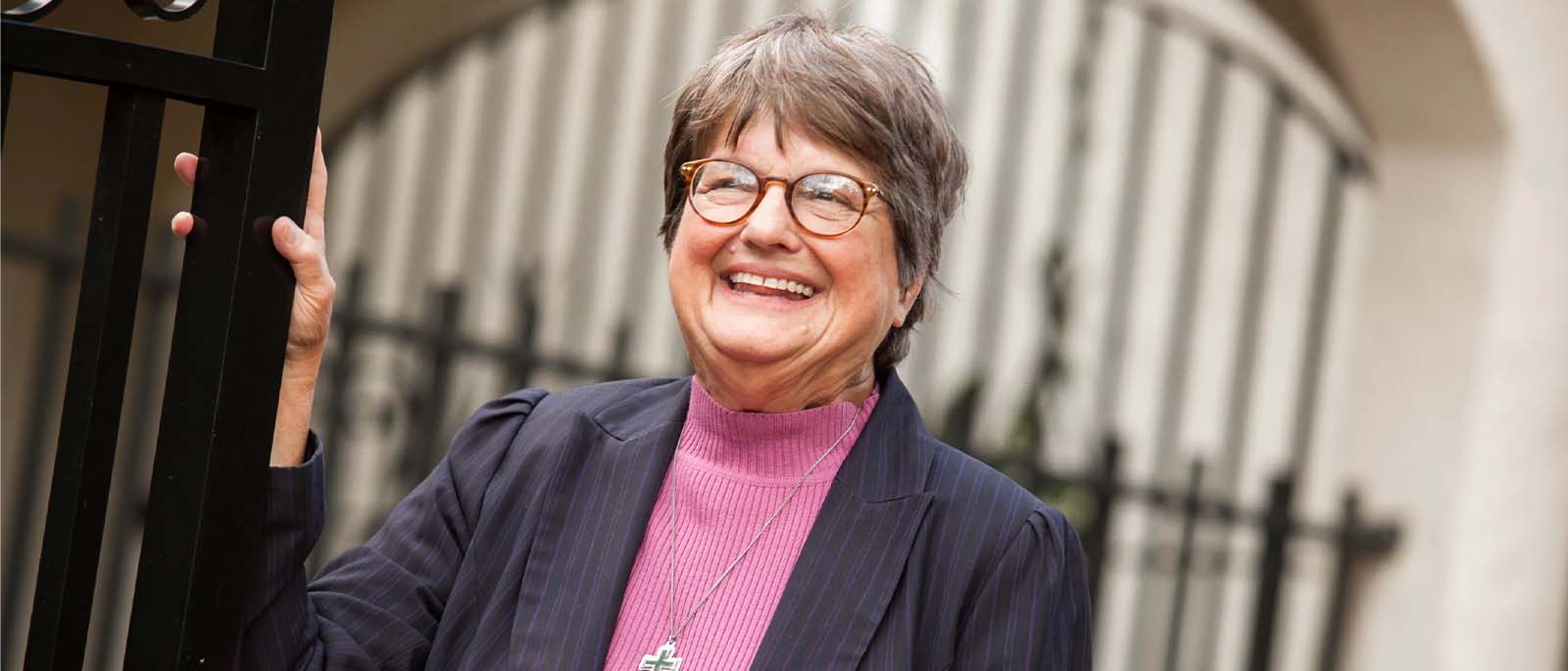
A Conversation With Sister Helen Prejean
As Sister Helen Prejean prepared to see her life and work dramatized on the Met stage in Jake Heggie’s Dead Man Walking, she spoke to the Met’s Matt Dobkin about her decades-long fight against capital punishment and the power of art to change hearts and minds.
By now, you’ve seen your story appear at numerous opera houses around the globe. How does it feel to have this piece arrive at the Met?
I don’t follow the opera world super closely, but when Jake [Heggie] told me, “Helen, it’s going to be at the Met, and it’s going to be Opening Night,” I knew we had arrived! I’m especially pleased because it allows us to reach an even wider segment of society. The only way we’re ever going to change things is by awakening the people, and since they can’t directly experience the executions, the main way we have to wake them up is through art.
How did you initially become involved with inmates on death row?
For a long time, I was doing what you’d call regular nun stuff—teaching children, working with prayer groups, leading Bible studies. I thought the Christian life was just about charity, being kind to people. But then, my awakening came. I heard a sister speak about social justice and the integral connection between being a follower of Jesus and being a person who worked for justice. A year later, I got an invitation to write letters to Pat Sonnier on death row. I called it “Sneaky Jesus” because I thought it was just a pen-pal thing. I had no idea I was going to end up being in the execution chamber.
And what have you learned in the four decades since that first encounter?
I learned that the death penalty crystallizes every social-justice issue we have in the United States. First of all, only poor people are put to death because rich defendants get crackerjack attorneys who file a hundred pretrial motions. Race also plays a part. Even though the majority of homicide victims are people of color, overwhelmingly prosecutors only seek the death penalty when white people are killed. On a personal level, I learned what a mistake it was to stay away from the victims’ families. At first, I didn’t know what to do about their pain, so I stayed away. Now, whenever I accompany someone to execution, I always reach out to the victims’ families.
What was your reaction when you found out that Jake and Terrence McNally wanted to adapt your book into an opera?
I said, “Great! Bring it on!” And when Jake called me, I said, “I don’t know boo scat about opera. Just make me two promises: One, it can’t be atonal. We’ve got to have melodies that people can hum. And two, redemption has to be at the heart of the story.” And he said, “You got it.” Now, I see that opera can convey this story in such a beautiful way because it’s both live drama and music that instructs the heart. It brings us to places we don’t even know we have.
Both Susan Sarandon, who portrayed you on screen, and Joyce DiDonato, who sings Sister Helen at the Met, have described this as a love story. Do you agree?
Absolutely. Once, a reporter asked me if I was in love with Pat Sonnier because we said “I love you” before his execution. I explained that it was love—not romantic love, but still the love of one human being for another. I stood for his dignity. It was the same with Robert Lee Willie, another death-row inmate. When he finally acknowledged what he did, I told him, “Robert, you’re a beloved son of God. You’ve done a terrible thing, but that’s not all you are.” And he said, “I’ve been called a son of a you-know-what a lot of times, but never no son of God.”
Forty years on, have you seen the national conversation surrounding capital punishment evolve?
When my book came out, support for the death penalty was 80 percent. We’ve made great progress since then. More and more states are shutting it down, prosecutors are seeking it less, and even juries presented with terrible crimes often don’t end up voting for death. We really are a life people—we just need to keep waking people up. So as long as God gives me breath, I’m going to be out on the road, and I’m going to be with the people telling this story.
Edited by Christopher Browner